Physical Address
304 North Cardinal St.
Dorchester Center, MA 02124
Physical Address
304 North Cardinal St.
Dorchester Center, MA 02124

Alain Bertaud’s long awaited book, Order Without Design: How Markets Shape Cities, is out today. Bertaud is a senior research scholar at the NYU Marron Institute of Urban Management and former principle urban planner at the World Bank. Working through a pre-release copy over the past few weeks, I can confidently say that the book is an instant classic of the urban planning genre, and will be of significant special interest to market urbanists in particular. Rare among writers in this space, Bertaud brings an architect’s eye, an economist’s mind, and a planner’s experience to contemporary urban issues, producing a text that is theoretically enriching and practically useful. Alain and Marie-Agnes—his wife and research partner—have lived in worked in over a half-dozen cities all over the world, from Sana’a to Paris to San Salvador to Bangkok. For the reader, this means that Bertaud can speak from experience, supplementing data and theory with entertaining, real world examples and war stories. Order your copy today!
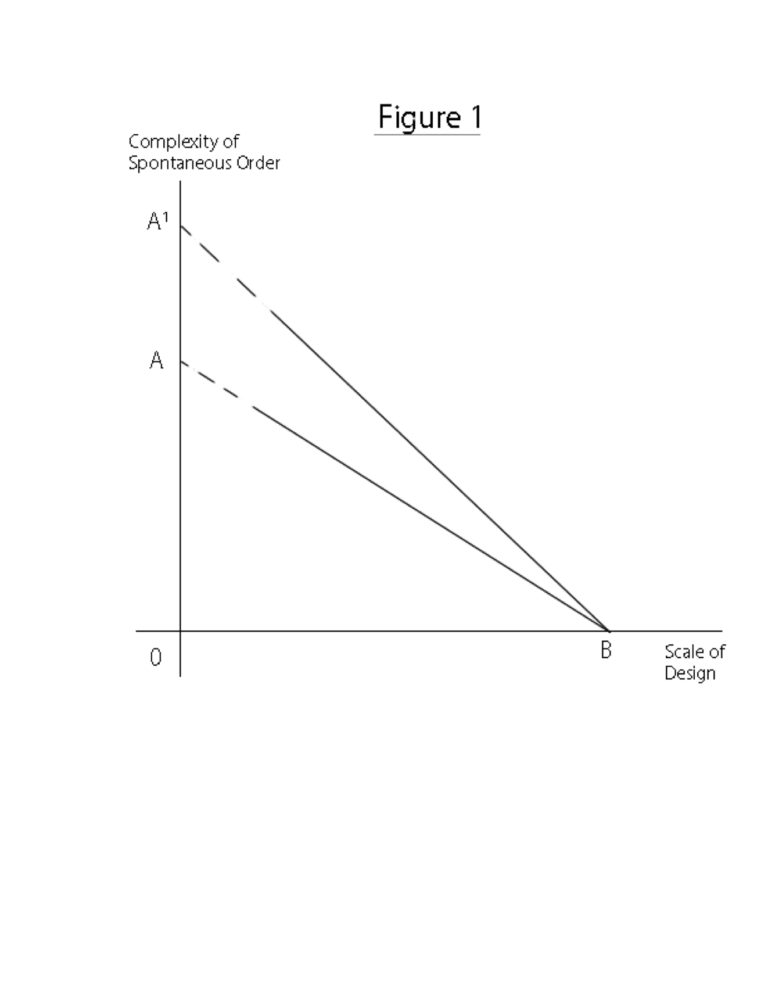
We can visualize the tradeoff between the scale of design and the complexity and spontaneity of a social order as a downward-sloping curve. A sort of “scale-versus-order-possibilities frontier.” In addition to scale and spontaneous order/complexity, a third element I would add to the tradeoff is the passage of time. You can to some extent plan for complementarity, but you can’t really plan for spontaneous complexity and intricacy. [Helpful to bring in capital theory here?] Fortunately, time allows people to some extent to adjust social networks and physical spaces to better complement their own plans, in ways that the designer could not foresee. That is, for any given scale, time lets people figure out novel uses for, or changes to, the space as originally designed. Those unthought-of uses constitute an increase in the level of complexity in a spontaneous order. Over time, then, the frontier can shift outward. Figure 1 reflects these relations: The scale of a structure and the designed or planned uses of the space within that structure are of course two different things. Increasing the dimensions of a room doesn’t necessarily mean the elements that go into its design become more complex. But to keep things simple, Figure 1 treats scale and design as highly positively correlated. [Is this necessary?] Thus, as scale increases so do the designed elements – you move from point A to point B – and together they decrease the potential for spontaneous order. [But think about the tradeoff between scale and order, keeping design constant. Just increasing scale does seem to increase the designed/planned element in a previously undesigned space.] Then, as time passes, the frontier shifts up from AB to A’B, where point B represents the case where the structure occupies100% of the relevant action space. So for any given scale, the […]
One of the popular sports broadcasts I used to watch as a kid promised interviews with athletes that would bring them to you “up close and personal.” As I was once waiting in line to order coffee at one of my favorite local coffeehouses there were several people ahead of me. I followed the “barista” taking orders, with his dark-framed glasses, reddish beard, and slightly hurried manner. From a distance, in those few minutes I formed an expectation about his personality: Blasé and probably a bit curt; someone who really doesn’t want to be here. But when I came face-to-face with him and placed my order, I could feel his liveliness, warmth, and friendliness. My expectations needed revising. It’s the same with cities. From a distance, from an airplane or a photograph, we notice macro features and sweeping patterns that might form our first impressions. Noticing the layout of streets or the pattern of buildings from the air we might say something like “Oh, what an impressive skyline!” or “This place is a dump!” For instance, New York, London, Paris have distinct skylines. Approaching these cities from the air is thrilling as we spot the Empire State Building dominating Midtown Manhattan, Big Ben and Parliament along the Thames, or the Eiffel Tower standing counterpoint to la Defense. Tokyo’s on the other hand is a different story, but that difference is informative. Tokyo’s skyline is, at least to me, terribly underwhelming. Heavily bombed and burned during World War II and subject to devastating earthquakes throughout its history, Tokyo has few tall buildings compared to other major cities. Even as you drive in closer along the highway from Narita Airport the architecture for the most part remains boxy and drab. When you actually enter the central city, with the Sumida River winding […]
[In this space I’ll be posting quotes, ideas, and excerpts relating to a book I’m writing (thus far untitled), which I might describe as “What I have learned from the economic and social theory of Jane Jacobs.” My hope is to get thoughtful, informed feedback that will be useful in shaping the book.] Architects and planners refer to something called the “built environment” by which they usually mean things such as city streets and pathways and the grids made up by them, buildings of various kinds, plazas, the infrastructure of water and energy inflow and outflow, parks and recreation areas, unbuilt open spaces. Although parts of each of these urban elements were consciously constructed, usually by a team of individuals, the way that they fit together, except in the case of mega- and giga-projects, are not the result of a deliberate plan. Buildings in a particular location, for example, – offices, schools, residences, retail, malls, entertainment, places of worship, research facilities – are of different vintages, constructed by different people for different purposes at different times with different techniques, historical contexts, and sensibilities. But the way they all more-or-less complement one another, their “fit,” is an emergent, unplanned phenomenon. I will refer to these elements collectively as the “built framework,” where the word “built” should not in all cases imply deliberate design. What goes on within the built framework can also be planned or unplanned There are, of course, the activities for which a particular element is intended (most recently, that is, because spaces can have multiple uses over time). A gas station, what we might call a “specialized space,” is primarily for pumping gas, not for seeing a football game, which you do at a stadium. But there are other activities that take place in or are facilitated by a given element, […]
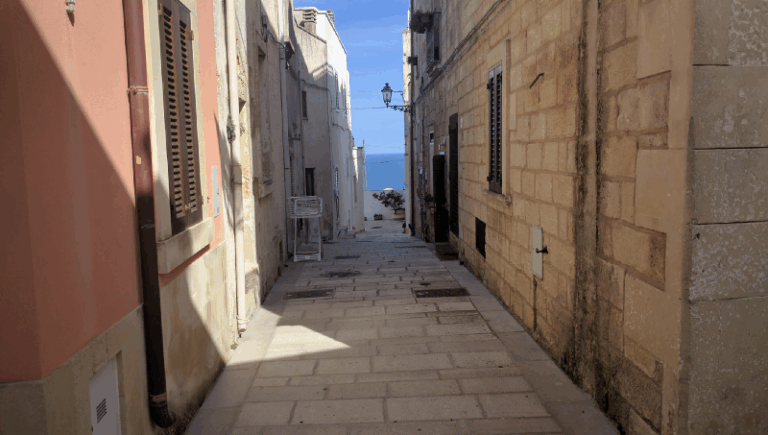
There is always the lurking suspicion that great urbanism is a museum piece, something we cannot recreate. We have to console ourselves with guarding what’s left. Even then, some feel it unfit for ‘modern life,’ that humans cannot live as their recent ancestors had. Urbanists tend to celebrate cities and spaces of great renown, which makes remaking our own little corner of the world seem futile. I spent a year living in Europe–visiting Belgium, Italy, Spain and France, among other places–and found that the best places were not the big cities, but old villages, often very wealthy in times past. And it’s easy to miss what’s special about these quiet gems: the little streets and paths within them that people call home. A newly-built mall in Leuca, Italy showcases an older design sensibility A bike tour led me to several towns in southern Italy—among them, Castro was my favorite aesthetically, with warm, immaculate streets around the center that were nonetheless devoid of many people. Castro, Italy Castro, Italy Long before going to Europe, I had seen this meme photo: Lo and behold, one such camera appeared right above where I parked my bike. But overall, Bari’s old city was my favorite, with all the life coarsing through its streets. Families would open their doors and put out folding chairs in the streets. They made the streets their living room, while literally airing their dirty laundry in the rafters between buildings. Bari, Italy A quiet street in Leuven, Belgium—perhaps my favorite of all A Flemish parking lot—the Grand Beguinage, Leuven, Belgium Reims, France In Reims, I got to tour some underground cellars that formerly stored champagne. With cool temperatures, high ceilings and lush moss lining the walls, I thought—I’d love to live here! Should people be banned from […]
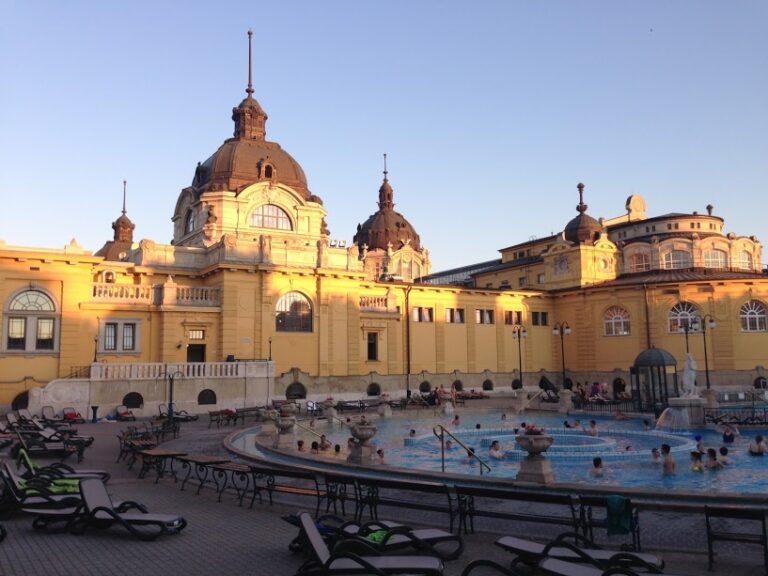
I’ve been enjoying the series Meet the Romans, and episode 2 really revealed what I love about many ancient Roman cities. I’ve been to quite a few, though often without knowing beforehand that they were ancient Roman cities. These include cities like Dubrovnik, Split, La Spezia, Florence, Istanbul, Budapest, and yes, Rome. The attributes I’ve come to love include: 1. very narrow streets, often not accommodating cars 2. countless 4- to 6-story buildings with a variety of units, from cheap tiny units to large family units with courtyards 3. built into the 1st floor of these buildings are tiny shops – everything from restaurants to banks to bakeries 4. in ancient Rome most housing units weren’t used for much more than sleeping – living was done in the city. You often didn’t have a kitchen, laundry facilities, or even a bathroom. The host Mary Beard tells about the horrors of these things (barely enough room to lie down, the danger of dark small alleys), but I think in a modern world they’d be wonderful (ok, keep private bathrooms). Walk to your job, spend time in a vast variety of restaurants or pubs, experience the feeling of a busy narrow street, chat with neighbors at a public park, and take your kids to relax and play at the public bath or let them play in a public square while you grab a cappuccino. This is heaven to me. The only reason most modern cities aren’t like this is because we force them not to be. We require minimum space for all housing types, design our streets for cars instead of people, limit the height of buildings in most places, and separate our retail from our living zones. The effect is to push the less-rich outward, separate us from other people, and […]
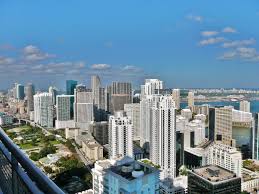
I sometimes ask myself if there is a “libertarian architecture” when thinking about what a purely libertarian culture — one that has been free from government intervention long enough to flourish — would look like. Not something I can answer in several hundred words, but let me begin. By “libertarian architecture” I don’t mean a particular style. In the absence of government intervention, however, I do think certain kinds of projects would be unlikely to emerge, and so it may be possible to rule out styles associated with such projects, from those of the Roman Forum to the Palm Islands of Dubai. My question may not seem so far-fetched to those who have read The Fountainhead, Ayn Rand’s influential novel about an uncompromising individualist architect, Howard Roark, who battles and defeats the forces of collectivism and conformity. For Roark/Rand individualist integrity means the radical rejection of traditional Palladian forms, the classical orders, and the aesthetics of the École des Beaux-Arts. Rand has Roark adopting a Frank Lloyd Wrightian, form-follows-function principle the product of which actually sounds like the hyper-modernism of le Corbusier, the architect whose (Euclidean) geometrical designs for entire cities, ironically, appeal more to the Cartesian rationality of collectivism than real human reason, which Michael Polanyi explains must actually rely tacitly on often inarticulable rules. But I don’t see why a libertarian architecture would necessarily reject traditional design. The Market Test Versus Liberating Wealth It seems that there are two somewhat contending forces to consider here. The first is the market test; the second the artistic freedom enabled by the wealth that markets create. Howard Roark’s survival depends on finding the right clients for his highly personal work, and at first there aren’t many of them. Tyler Cowen explains in In Praise of Commercial Culture that the reemergence of […]
I continue to ask urbanists “why aren’t you a developer yet?” That’s a sincere and serious question. I want to recruit architects, planners, engineers and activists who consider themselves urbanists (new or otherwise) into the ranks of the small developer cohort, because I think it is the best way for urbanists to have an impact on places they care about. If you have devoted thousand of hours of study and practice to what makes a good place, why leave the construction and renovation of buildings to developers? This question becomes a bit more pointed when you recognize that many conventional developers are doing work in urban settings under duress or without much of a clue about how to make their efforts fit an urban context. I think the typical generalist/urbanist will do a better job than whatever big development outfits are working in their city. While urbanists are working to heal the city or build better places, they should hang onto some of the buildings that get built/rebuilt along the way. Having a modest portfolio of buildings that pay rent will help them weather the next recession. (It is really hard to make a living doing fee for service or consulting work when nothing is getting built). With those reasons in mind, we still need to have a sober and realistic grasp of what is involved for someone to become a developer, given the arena they will likely operate in. This stuff ain’t easy. People tend to think that all real estate developers make tons of money, because some developers have. For every major league star in the real estate game there are scores of people hustling to make a living by making their neighborhood better. I don’t know how people arrive at the amount of money they assume is made on […]
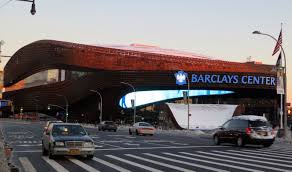
This week’s column is drawn from a lecture I gave at the University of Southern California on the occasion of the retirement of urban economist Peter Gordon. One of my heroes is the urbanist Jane Jacobs, who taught me to appreciate the importance for entrepreneurial development of how public spaces—places where you expect to encounter strangers—are designed. And I learned from her that the more precise and comprehensive your image of a city is, the less likely that the place you’re imagining really is a city. Jacobs grasped as well as any Austrian economist that complex social orders such as cities aren’t deliberately created and that they can’t be. They arise largely unplanned from the interaction of many people and many minds. In much the same way that Ludwig von Mises and F. A. Hayek understood the limits of government planning and design in the macroeconomy, Jacobs understood the limits of government planning and the design of public spaces for a living city, and that if governments ignore those limits, bad consequences will follow. Planning as taxidermy Austrians use the term “spontaneous order” to describe the complex patterns of social interaction that arise unplanned when many minds interact. Examples of spontaneous order include markets, money, language, culture, and living cities great and small. In her The Economy of Cities, Jacobs defines a living city as “a settlement that generates its economic growth from its own local economy.” Living cities are hotbeds of creativity and they drive economic development. There is a phrase she uses in her great work, The Life and Death of Great American Cities, that captures her attitude: “A city cannot be a work of art.” As she goes on to explain: Artists, whatever their medium, make selections from the abounding materials of life, and organize these selections into works […]